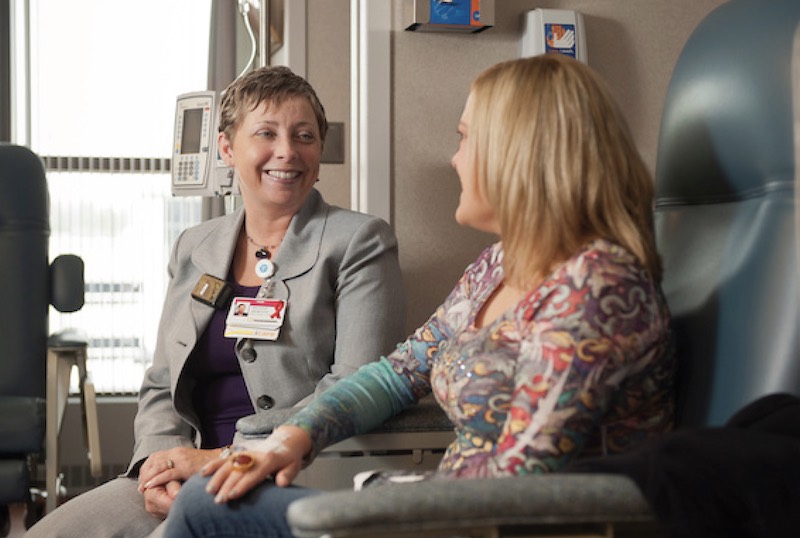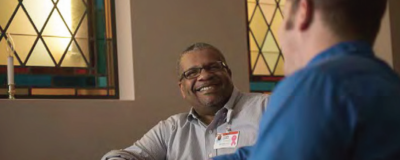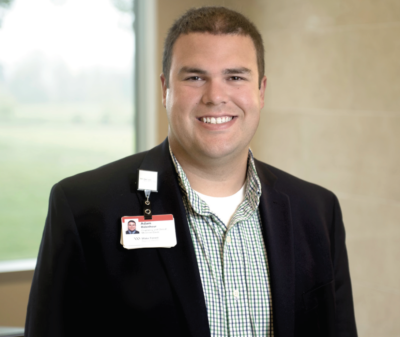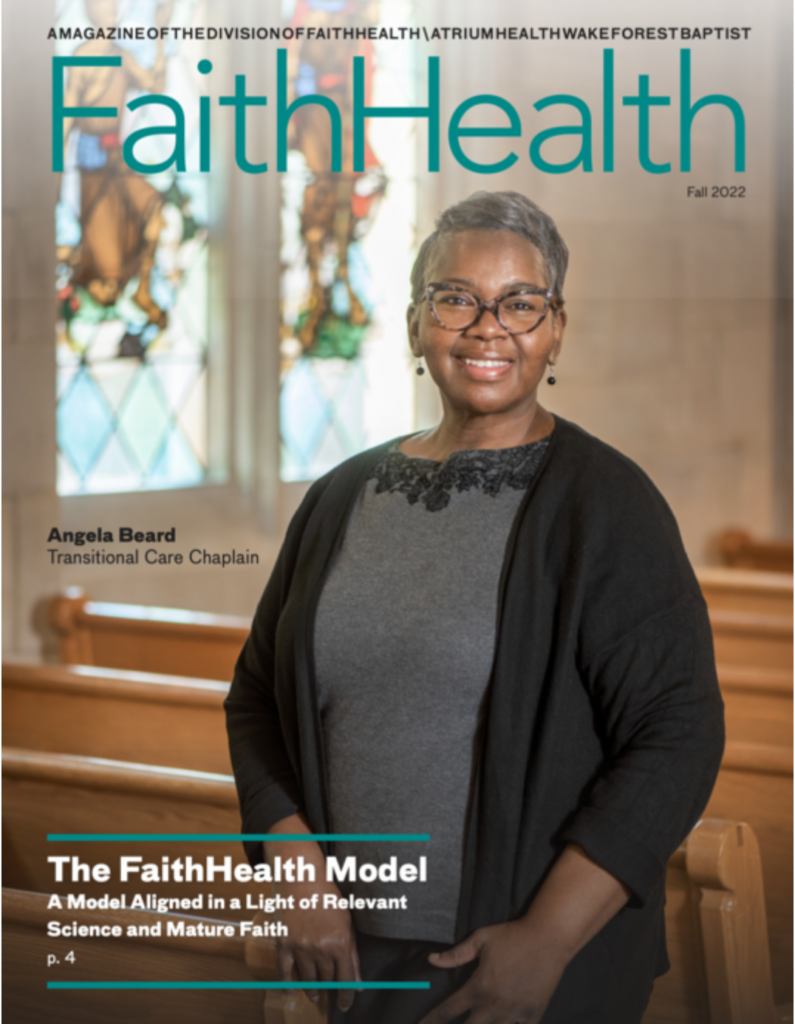
By Les Gura
Growing up in Boomer, North Carolina, a tiny farming township in Wilkes County, Graylin Carlton (above) innately understood the importance of religion, church and community. Today, Carlton, chaplain manager of Wake Forest Baptist Health Wilkes Medical Center, is one of a handful of chaplains carving out a unique, multifaceted role in small-town hospitals. These chaplain managers serve as traditional chaplains to patients, family and staff in the hospitals. But they also spend hours helping to connect patients and family members with support outside of the hospital walls – support drawn through the chaplain managers’ work with church communities, nonprofit and government agencies.
“In rural communities, there’s a lack of trust in hospital systems,” Carlton says. “It can just be a lack of education about the hospital, but you need someone to build bridges. Going through the chaplains makes a difference.”
 Carlton, together with his colleagues, Rev. Adam Ridenhour, chaplain manager at Wake Forest Baptist Health Davie Medical Center, and Rev. Dianne Horton, manager of chaplaincy and clinical ministries at Wake Forest Baptist Health Lexington Medical Center, have each had the opportunity to establish their own roles in the hospitals and communities where they work.
Carlton, together with his colleagues, Rev. Adam Ridenhour, chaplain manager at Wake Forest Baptist Health Davie Medical Center, and Rev. Dianne Horton, manager of chaplaincy and clinical ministries at Wake Forest Baptist Health Lexington Medical Center, have each had the opportunity to establish their own roles in the hospitals and communities where they work.
Each sits on the boards of local agencies to help assure community leaders of the commitment of their small hospitals to getting care for patients not just when they are inside, but when they are discharged. Many times, these services – transportation to follow-up appointments, access to food or housing, ability to afford medications – could not be possible without the assistance of the chaplain managers and the teams they work with to create the community and church connections.
“The role is important because it covers such an array of responsibilities,” Horton says. “Some could get lost if not for someone dedicated to getting it done.”
Horton works with two FaithHealth connectors, people who can directly serve or indirectly arrange for volunteers (typically through church communities) to serve people with various care needs. The goal is to keep people healthy enough that they don’t need to visit an emergency room for care. Horton also has developed a team of seven chaplain associates who assist inside the walls of the hospital as needed.
Ridenhour works at the smallest of the three regional hospitals, with just 50 beds, but has an additional hat – he also is a licensed counselor with a small clientele through CareNet Counseling, an affiliate of Wake Forest Baptist Health. That’s in addition to his role as chaplain manager and work leading a team of five chaplain associates and two FaithHealth connectors.
“We try to convey to patients and community members that we are not just caring for the soul, but we’re caring for the whole of the person,” Ridenhour says. “We make sure people are aware of community resources, opportunities within the hospital and offerings through faith communities. We’re a bridge to many of our community resources.”
Emily Viverette, director of FaithHealth Chaplaincy and Education, supervises the three chaplain managers and sees each appropriately finding their own fit in their communities given the multiple hats they wear. Long term, she believes that combining the traditional chaplaincy role within a medical center with a FaithHealth role of working in the community aligns resources for better health and healing.
“Chaplains are not the heroes of it all,” Viverette says, “but they are leverage points of connection and access for clergy, who can reach out to chaplains who’ve become really well-versed in resources in the community.”
Viverette says the changing role of hospital chaplains is an important one, even if it can be challenging, because it requires chaplains to hone skills that are not part of any curriculum.
“Traditionally, people underestimate the skills that chaplains have,” she says. And practically, in a cost-conscious world, another benefit of having a chaplain skilled enough to wear multiple hats is that small hospitals can justify the cost of a full-time chaplain whose different roles help keep people healthier, she says.
 Ridenhour says the additional duties of chaplain managers like himself and his colleagues allow them to take on “boundary of leadership work.”
Ridenhour says the additional duties of chaplain managers like himself and his colleagues allow them to take on “boundary of leadership work.”
“It’s really sitting on the fringes between behavioral health, spirituality and community work,” he says.
All of the chaplain managers noted how the COVID-19 pandemic has required them to adjust their approach, as well as those of their FaithHealth connectors and chaplain associates. Many meetings and connections are made by Zoom, including some meetings within the walls of the hospitals. The chaplain managers have had to help their chaplain associates, and especially hospital staff members, cope with a pandemic that often precludes one-on-one contact.
For family members, that can be devastating.
Carlton recalled one incident in which a patient came to the hospital testing positive for COVID-19, and one night, 15 members of the patient’s family arrived at the hospital stressed about catching it. He says his chaplain associates worked to redirect family members to resources for testing, as the hospital itself wasn’t just doing simple testing at the time. He and his team also work closely with hospital staffers stressed from coping with long hours and fears about the pandemic.
“For a rural community, the pandemic at first was kind of like, ‘This cannot be happening,’” he says. But as cases piled up and people began to become infected, it affected everyone.
“In a rural setting, everybody knows everybody. When it affects a family, it usually affects a person at the hospital,” Carlton says. “And so it’s been very stressful, very draining.”
The work, however, is more critical than ever, he and his fellow chaplain managers noted. In particular, they have paid more attention to staff who are coping with the pandemic as front-line providers.
“I’ve been a lot more intentional with our staff, doing check-ins and offering resources around medication, mindfulness and connection to the Employee Assistance Program and other counselors,” Ridenhour says. “We’re a resource for folks to come in and share what they’re dealing with.”
